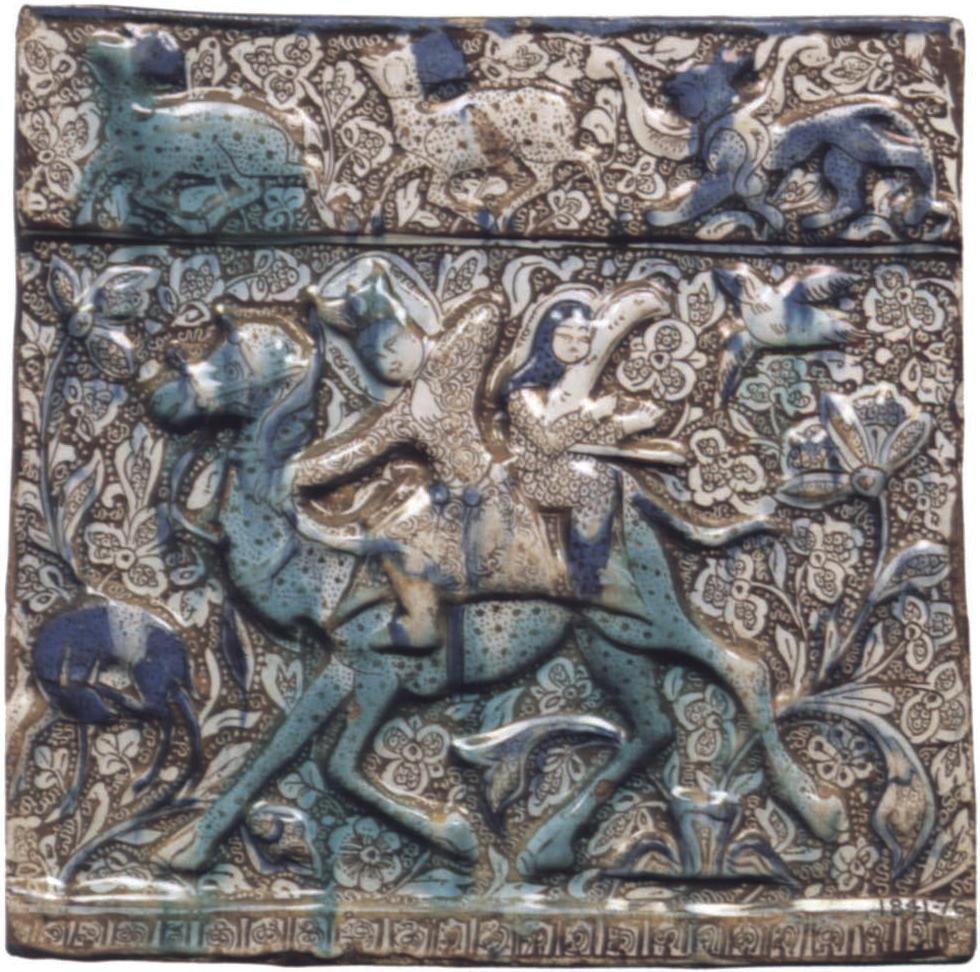Victoria and Albert Museum, London, 1841-1876.



Fig. 108 (cat. no. 97). Frieze tile with Bahram Gur and Azada on a camel, Iran (Takht-i Sulaiman), ca. 1270-75. Fritware, overglaze luster-painted.
Victoria and Albert Museum, London (1841-1876)
97 Fig. 108
Frieze Tile with Bahram Gur and Azada
Iran (Takht-i Sulaiman), ca. 1270-75
Fritware, overglaze luster-painted
31.5 x 32.3 cm (12⅜ x 12¾ in.)
Victoria and Albert Museum, London (1841-1876)
These two frieze tiles each have a figural subject in the main register, set against very similar densely vegetal backgrounds with birds in flight; in each case the narrow, almost identical border below is divided into small compartments that contain a highly stylized design. Both tiles have molded details accentuated in cobalt blue and turquoise pigment; owing to its volatile nature, the latter has spread in cat. no. 97, creating streaks on the surface of the tile.
Cat. no. 97 features two characters from the Shahnama (Book of Kings), Bahram Gur and his favorite harp player, Azada (see cat. nos. 55, 169).1 They are shown mounted on a camel, with Bahram Gur shooting at a deer while Azada plays her harp. In the upper register of the tile is a row of three running quadrupeds, two gazelles and a sphinx, set against a floral background. Cat. no. 98 shows two horsemen, one approaching from the right and the other from the left, in the act of dispatching the deer trapped between them with their swords.2 The composition suggests a narrative allusion, but none has yet been identified. The upper register of this tile is missing, but it is likely to have resembled that of cat. no. 97 in showing a sequence of animals.
The only Ilkhanid frieze tiles of known origin with pictorial representations come from Takht-i Sulaiman, and several examples of this type are in various collections.3 Images or text drawn from the Shahnama (see also cat. nos. 80-82, 95), such as the scene of Bahram Gur and Azada, were clearly deemed especially appropriate for this palace complex.
1. O. Watson 1985, pl. L,a.
2. Carboni and Masuya 1993, p. 23, no. 18.
3. See O. Watson 1977, pp. 109—10 and related notes.
Source: The Legacy of Genghis Khan Courtly Art and Culture in Western Asia 1256-1353